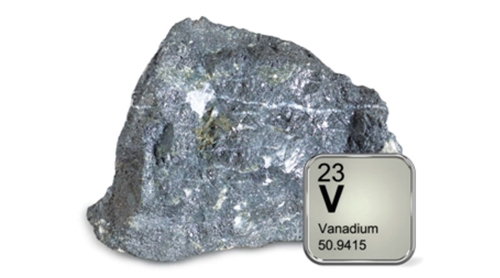Introduction
Vanadium, a lesser-known yet incredibly fascinating element, holds a unique place in the periodic table. With the atomic number 23 and symbol V, this transition metal boasts a range of intriguing properties and uses. Despite its relative obscurity compared to elements like iron or gold, V plays a crucial role in various industries and scientific advancements.
Let’s uncover some fun and surprising facts about this remarkable element.
Related Video: Vanadium
A Brief History of Vanadium
Vanadium was discovered twice independently.
The first discovery was by Spanish mineralogist Andrés Manuel del Río in 1801, who initially named it “brown lead” and later renamed it “erythronium” due to the red color of its salts. However, his discovery was dismissed by other scientists, who mistook the element for a chromium mineral.
It wasn’t until 1830 that Swedish chemist Nils Gabriel Sefström rediscovered vanadium while analyzing a new iron ore. Sefström named the element after Vanadis, the Norse goddess of beauty and fertility, reflecting the element’s colorful compounds.
Related reading: How Was Vanadium Discovered?
Unique Properties
Vanadium is renowned for its unique combination of properties.
It is a hard, silvery-gray metal with excellent resistance to corrosion and oxidation. This resistance makes it an ideal alloying agent, especially in steel production. V alloys exhibit enhanced strength, toughness, and wear resistance, making them valuable in various high-stress applications.
One of the most fascinating properties is its ability to exist in multiple oxidation states, ranging from -1 to +5. This versatility allows vanadium to form a wide variety of compounds, each with distinct chemical and physical characteristics. The most common oxidation states are +2, +3, +4, and +5, which contribute to the element’s vibrant array of colors in its compounds.
Vanadium in Nature
This metal is relatively rare in the Earth’s crust, with an average abundance of about 160 parts per million. However, it is widely distributed in nature, often found in minerals such as vanadinite, carnotite, and patronite. Significant vanadium deposits are located in China, Russia, South Africa, and the United States.
Interestingly, V is also found in small quantities in various plants and animals. Some species of ascidians, or sea squirts, can accumulate vanadium in concentrations a million times higher than in seawater. The role of vanadium in biological systems is not fully understood, but it is believed to be involved in certain enzymatic processes.
Industrial and Technological Applications
- The primary use is in the production of high-strength steel alloys. Vanadium steel is widely used in the construction of buildings, bridges, pipelines, and tools, where its superior strength and durability are essential.
- Additionally, vanadium’s corrosion-resistant properties make it an ideal material for use in harsh environments, such as in the aerospace and automotive industries.
- It is also a key component in the production of vanadium redox flow batteries (VRFBs), a promising technology for large-scale energy storage. VRFBs offer several advantages over traditional batteries, including a longer lifespan, scalability, and the ability to rapidly discharge and recharge. These characteristics make VRFBs well-suited for use in renewable energy systems, where they can store excess energy generated by solar and wind power for later use.
Surprising Uses and Fun Facts
Beyond its industrial applications, vanadium has some surprising and lesser-known uses.
- For example, its compounds are used as catalysts in the production of sulfuric acid, one of the most widely produced chemicals in the world.
- It also finds use in the manufacturing of certain ceramics and glass, where it imparts a beautiful blue or green color.
- One of the more unusual uses of vanadium is in the field of superconductivity. Certain V-based alloys exhibit superconducting properties at very low temperatures, making them valuable in scientific research and advanced technologies.
- V has also found a place in the world of nutrition. While not an essential nutrient for humans, vanadium has been shown to have potential health benefits, including improving insulin sensitivity and promoting bone health. Some dietary supplements contain vanadium, although its efficacy and safety are still under investigation.
The Future of Vanadium
As technology continues to advance, the demand for vanadium is expected to grow. The development of more efficient and sustainable energy storage solutions, such as VRFBs, will likely drive increased interest in this versatile element. Additionally, ongoing research into the unique properties of vanadium may uncover new and exciting applications in various fields.
Conclusion
In a word, vanadium is a hidden gem in the periodic table, offering a wealth of fascinating properties and uses. From its colorful compounds and role in high-strength alloys to its potential in cutting-edge technologies, V is a testament to the endless possibilities that the elements of the periodic table hold. As we continue to explore and innovate, vanadium’s contributions to science and industry are sure to shine even brighter. For more details, please check Advanced Refractory Metals (ARM).
